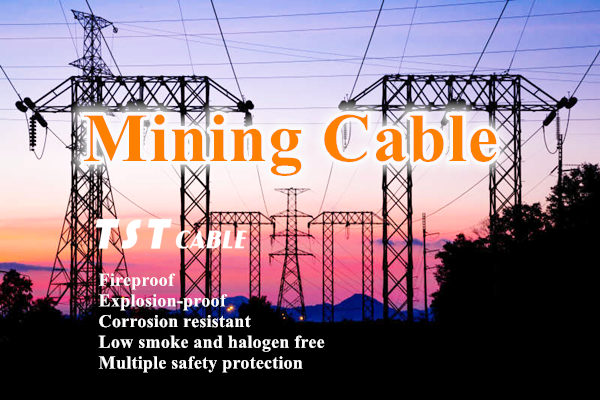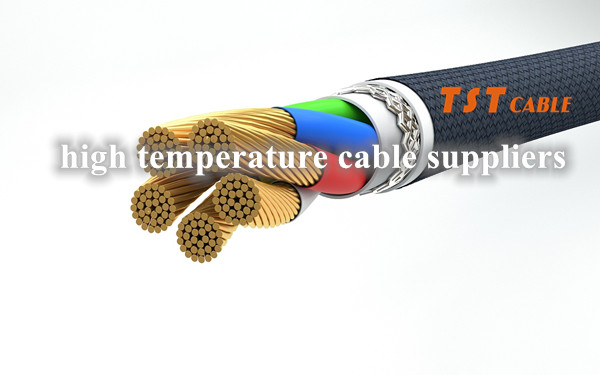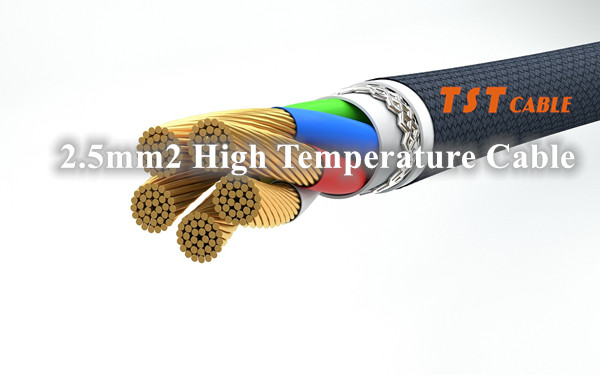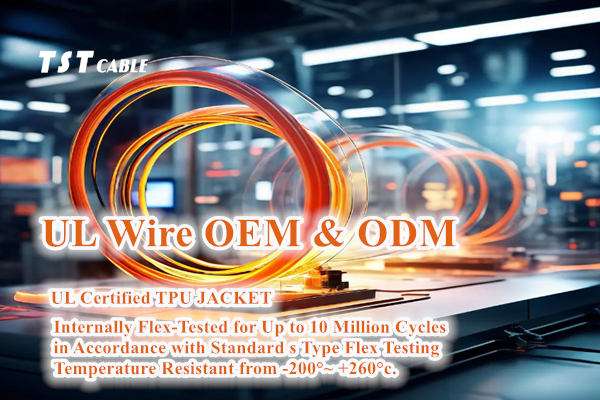
Mining cables are wires and cables used in the mining industry and are very important in coal mine shafts. Mining cables are used in the coal mining industry to connect machines and equipment such as coal mining machines, transportation machines and basic lighting and communication. Due to the harsh working environment of mining cables, the excessive accumulation of coal mines can easily cause explosions, so the safety requirements for cables are very high.
Mining cable is a common name for coal mine cable, mining cable are insulated wires, should all have gone through the safety standard of China’s mining anti-commodity safety mark management center awarded the mining anti-commodity safety mark qualification certificate. Mining cable refers to the coal mining industry, the use of ground equipment and underground equipment with wire and cable products. These include coal mining machine, transportation machine, communication, lighting and signaling equipment with cables, as well as electric drill cables, cap lamp wire and underground mobile substation with power cables and so on.
Product standard of mining cable
This product is produced according to GB/T12972-2008 “rubber sheathed flexible cables for mining” and MT818-2009 “Flame retardant cables for coal mining”, and it can also be produced according to the recommended standards of the International Electrotechnical Commission (IEC), the British standard, the German standard and the American standard according to the needs of users.
Scope of application of mining cable
Mining rubber flexible cable is suitable for the frequency rated voltage U0/U 8.7/10KV and the following mining power unit with mobile laying cable.
The use of mining cable characteristics
- The frequency rated voltage U0/U is 380/660V, 660/1140V, 1.9/3.3kv, 3.6/6kv, 6/10KV, 8.7/10KV, 300/500V.
- Maximum allowable working temperature of cable conductor: 65℃ 90℃.
- The lowest allowable working ambient temperature of the cable is -35℃.
- Cable bending radius: not more than 6 times the outer diameter of the cable.
Common specifications of mining cable model
Mining cables include mc cable, mcp cable, mz cable, mzp cable, myq cable, my cable, mcptj cable, myptjE cable, m cable, mkv cable, myv cable, myv cable, mkyv cable, myv cable, ugf cable, high-voltage mining cable, 10kv rubber cable, 6kv mining cable, mining mobile cable, mining fire-retardant cable, mining rubber cable, mining fire-retardant cable. mcpt cable, mining rubber cable.
MHYV coal mine with high-voltage polyethylene insulation polyethylene sheath communication fiber optic cable is used in mining plants for general data signal transmission, suitable for fixed immobile laying.
MHYVR coal mine with high-voltage polyethylene insulation polyethylene sheath communication flexible cable is used in mining plants for general data signal transmission, can be moved to apply.
MHYVP coal mine with high-voltage polyethylene insulation hand-woven shielded polyethylene sheath communication fiber optic cable is used for data signal transmission in the field of electrostatic field, applicable to fixed laying.
MHYVRP Coal Mine High Voltage Polyethylene Insulated Hand-woven Shielded Polyethylene Sheathed Communication Flexible Cable is used for data signal transmission in the field of electrostatic field, and the cable is softer.
MHYBV coal mine high-voltage polyethylene insulation galvanized steel wire hand-woven armored cable with polyethylene sheath communication fiber optic cable is used to transmit data signals in places where the impact of mechanical equipment is high.
MHY32 High-voltage polyethylene insulated stainless steel wire armored cable with polyethylene sheath is used for main data signal transmission in flat tunnel, vertical shaft or inclined shaft.
Structural characteristics of mining cable
Conductor:
Usually mining cables are multi-stranded fine copper or aluminum wires stranded together for the transmission of current. The cross-sectional area of the conductor is selected according to the current-carrying capacity of the cable to meet the current transmission requirements of the cable under specific operating conditions.
Insulation:
Immediately outside the conductor of a mining cable, it is used to isolate the conductor from the external environment and prevent current leakage. Insulation materials usually have good electrical insulation properties and heat resistance, such as polyethylene (PE), cross-linked polyethylene (XLPE) or ethylene propylene rubber (EPR).
Filler:
In mining multi-core cables, fillers are used to fill the gaps between conductors to maintain the circular structure of the cable while providing some mechanical protection. Fillers are usually made of non-hygroscopic materials such as polypropylene fibers or glass fibers.
Inner Sheath:
Wrapped around the insulation and filler, it is used to protect the internal structure of the mining cable from mechanical damage, chemical corrosion, or moisture intrusion. The inner jacket material may be polyvinyl chloride (PVC), polyethylene (PE) or other synthetic rubber.
Shield:
In some mining cables, the shield is used to minimize electromagnetic interference (EMI) or radio frequency interference (RFI). It usually consists of copper foil, copper tape, or braided copper wire that surrounds the inner sheath.
Outer Sheath:
The outer sheath is the outermost layer of protection for mining cables and is used to protect the cable from external environmental influences such as moisture, chemicals, UV radiation and mechanical damage. The outer jacket is usually made of weather, oil, and chemical resistant materials such as neoprene (CR), chlorosulfonated polyethylene (CSM), or specialty PVC.
Armor Layer (optional):
In some applications where higher mechanical protection is required, mining cables may have an additional armor layer. The armor layer usually consists of steel wires or steel strips, which are used to enhance the cable’s tensile strength and compression resistance.
The use of mining cable characteristics
- Wide range of applications, of which the main use is the mining industry’s surface and underground equipment, involving oil, gas, mining electric drilling cables, communication and lighting equipment cables, mining and transportation cables, mining lamp cables and underground mobile substation power supply cables;
- Due to the harsh working environment of mining cables, the use of the environment is extremely complex, and the excessive accumulation of coal dust can easily cause explosions;
- When using mining cables, they need to be moved, bent and twisted frequently. So the wire is soft, structurally stable, not easy to kink, etc. And has a certain degree of wear resistance.
The development status of mining cable
China’s mining cables have formed a considerable scale after several years of rapid development, but because the production capacity is greater than the demand, the situation of supply exceeds demand. Production capacity has greatly exceeded this year’s forecast demand value, while wire and cable enterprises are faced with the urgent need to improve the technical content of products.
- low-level duplication of construction in recent years, wire and cable industry on the adjustment of product structure is not enough attention, product structure contradictions are still prominent, high-level products to meet the needs. For example, from a broad category, China’s bare wire production accounted for nearly 1 / 5, developed countries accounted for only 1 / 10. And in the bare wire, overhead lines and ordinary steel-core aluminum stranded wire and accounted for the vast majority.
- Low economic efficiency of the industry’s loss-making enterprises more than 700, a loss of more than 1/4, the industry’s sales income tax rate of 11.7% in 1991, fell to 5% in 1995. Because of the efficiency decline over the years, the loss-making enterprises increased, the industry’s funds are generally tense, the average asset-liability ratio of up to 70%.
- The scale of growth is too rapid, the overall capacity of the wire and cable industry is greater than the demand for more than double the number of major categories of products in the year 2000 forecast demand is less than the production capacity.
Price calculation of mining cable
Mining cable series price formula is as follows: the weight of copper X copper price calculation: silk warp ÷ 2 = 1.25X1.25X3.14 = square number of roots X silk X0.89X the then copper price +10% of the processing fee. Mining cable cost price calculation Square X1.83 = the weight of copper X the then copper price + armored price (weight X 0.4 yuan / pound) = cost price + 10% of the processing fee The price of the cable = the cost of manufacturing materials + fixed costs + taxes + business expenses + profit Manufacturing material costs = material costs * (1 + material consumption) (material costs that is, the theoretical calculated value) Fixed costs vary according to the individual companies, generally including production wages, management wages, utilities, repairs, depreciation, rent, transportation costs, etc. If you want to know the price of mining cable, you can contact TST CABLES senior engineers by email.
Classification and use of mining cable
For coal mine underground use of rubber cables, plastic cables and communication cables MT818.1 ~ 818.14 a – 2009 made specific provisions, in accordance with the provisions of the T818 standard who will be flame retardant cables for coal mines are divided into coal mines with a mobile class of flame retardant flexible cables, coal mines with a rated voltage of 10kW and the following copper-core fixed-laying flame retardant power cables and coal and fire-retardant communication cables with three categories.
Mining cables can be divided into rubber cables, armored cables and plastic cables 3 kinds of construction, according to the use can be divided into signal communication cables, control cables and power cables, according to the voltage level can be divided into low-voltage cables, high-voltage cables and kilovolt-level cables, according to the cable core material can be divided into copper-core cables and aluminum-core cables, etc..
Mining cable structure type
Mining cables can be divided into rubber cables, armored cables and plastic cables according to the structure of three kinds.
The so-called armored cable is to use steel wire or steel belt to armored cable. Due to the strong tensile strength of steel wire or steel belt, steel wire armored cable is mostly used in vertical shaft or sharp inclined roadway; while steel belt armored cable is mostly used in horizontal roadway or slow inclined roadway. The biggest advantage is the high insulation strength, suitable for high-voltage cable, in the underground mostly used for fixed equipment and semi-fixed equipment armored cable power supply.
Rubber cable is divided into ordinary rubber cable, flame retardant rubber cable and shielded rubber cable. For the power supply of underground mobile equipment, more flexible, able to bend the rubber cable. Rubber cable is mainly used pregnant to mining area mobile equipment power supply.
The main structure of the plastic cable and the rubber cable is basically the same. Only its core insulation and outer sheath are made of plastic (PVC or cross-linked polyethylene), the advantages are: allow high working temperature, good insulation, corrosion-resistant sheath, taught to set the drop is not restricted. If the cable is externally armored, it is used under the same conditions as the armored cable; if it is not externally armored, it is used under the same conditions as the rubber-sleeved cable. Therefore, when conditions permit, should try to use plastic cables.
Common models of mining cable
- Mining cable is the abbreviation for coal mine cable, mining cable are flame retardant cable, should be issued by the National Mining Product Safety Mark Center of the Safety Mark Certificate of Mining Products through the safety standard, mining cable has the following six types of models, type YQ.
- that is, light general-purpose rubber cables, connecting AC voltage 250V and the following light mobile electrical equipment, YQW type.
- that is, outdoor light general-purpose rubber cables, can be connected to both AC voltage 250V and the following light mobile electrical equipment, but also has the weather resistance and a certain degree of oil resistance.
- YZ type, that is, medium-sized general-purpose rubber cables, can be connected to AC voltage 500V and below various mobile electrical equipment, YZW type.
- that is, outdoor medium-sized general-purpose rubber cable, can be connected to the AC voltage 500V and below a variety of mobile electrical equipment, heavy-duty general-purpose rubber cable YC type, that is, heavy-duty general-purpose rubber cable, can be connected to the AC voltage 500V and below a variety of mobile electrical equipment.
- and can withstand greater mechanical, YCW type, that is, outdoor heavy-duty general-purpose rubber cables, can be connected to the AC voltage 500V and below a variety of mobile electrical equipment, with weather resistance and certain oil resistance.
Sheath type of mining cable:
Copper sheath: such as BTTZ, BTTQ, BTTVZ, BTTVQ and other models of mineral insulated cables, the seamless copper tube is used as the sheath, this sheath not only provides good electrical conductivity, but also can be used as a grounding wire, which increases the safety of the cable.
Copper tape wrapped longitudinally and continuously welded sheath: This type of sheath is commonly used in flexible mineral insulated cables, such as YTTW, BTTW, BTTRZ and other models. It uses copper tape wrapped longitudinally and continuously welded to provide good mechanical protection and electrical connection.
Aluminum Sheathing: Aluminum sheathed isolated mineral insulated cables, such as models NG-A, BTLY, etc., use seamless aluminum tubes as the sheath. Aluminum sheath is lightweight and corrosion-resistant, which is suitable for occasions where weight reduction is required.
Rubber mixture sheath: In some mining cables, such as MYPT type mining cables, the sheath layer is generally a rubber mixture based on neoprene rubber. This sheath has good resistance to oil, acid and alkali, high temperature and other properties, suitable for harsh mining environment.
Polyvinyl chloride (PVC) sheath: PVC is a common plastic material with good electrical properties, corrosion resistance and processing performance. In some mining cables, such as MYJV type mining cross-linked polyethylene insulated PVC sheathed cable, PVC is used as the sheath material.
What is the current carrying capacity of a mining cable?
Carrying capacity is the maximum current that a cable can carry.
For mining cables, the current carrying capacity is usually designed to be between 200A and 2000A, but higher ratings may be possible, depending on the construction of the cable and the needs of the application.
What is the typical ampacity of a mining cable?
The current carrying capacity of a mining cable is not a fixed value, but is influenced by a number of factors, including conductor cross-sectional area, conductor material, laying method and ambient temperature. The following is a general description of the current-carrying capacity of mining cables:
Range: Mining cables usually have a current-carrying capacity between 200A and 2000A. Note, however, that there are also cables with higher current carrying capacity ratings.
Factors affecting the current carrying capacity of mining cables:
Conductor cross-sectional area: the larger the cross-sectional area, the larger the area through which the current passes, thus increasing the current-carrying capacity.
Conductor material: copper conductivity is better than aluminum, so the copper conductor cable has a relatively high current-carrying capacity.
Laying method: different laying methods (such as open laying, through the pipe, etc.) will affect the heat dissipation of the cable, which in turn affects the current-carrying capacity.
Ambient temperature: as the ambient temperature rises, the resistance of the cable conductor will increase, resulting in increased heating of the cable, which in turn reduces the current-carrying capacity of the cable.
Safe selection: When selecting mining cables, comprehensive consideration should be given to specific application scenarios, expected current loads and the above influencing factors to ensure that the cables are operated within the range of safe current-carrying capacity.
Overall, the load capacity of mining cable is a dynamically changing value, which needs to be selected and adjusted according to the specific situation. In practical application, it is recommended to consult professionals or refer to relevant standards and norms to ensure the safe operation of cables.
Service life of mining cable
There are many models of mining cables, mining power cables, mining control cables, coal mining machine cables and mining rubber mobile flexible cables, the service life of different models of mining cables is not the same.
Mining power cable (MYV, mining control cable (MKWVMKYJV) = general fixed laying, the service life is generally very long, at least 10 years. Coal mining cable, its service life is not very high, the quality of a good point in half a year to a year, the quality of the second point of 7 days to 3 months, the mine in order to be safe, generally a cable used to a certain time will have to change. Mining mobile flexible cable life is not very long (MYPMYPTJ), more than a year.
Mining cable laying precautions
- Safety. When laying cable lines must consider the safety, because the special environment of the mining area will make the laying of the line becomes more complicated, easy to be affected by external forces leading to breakage. From such a point of view, we must pay attention to the safety of the line laying, in the design of the line, we must avoid the cross-border with the underground facilities, to avoid the construction of the project with the construction in progress, to avoid the corrosive environment, etc..
- Economic costs. The laying of cable lines must take into account the economic costs, because the cable lines will be used in the mine, so the cost of the cost is very high, so we must take into account the economic cost of investment. In the design of the line, can not be too long, otherwise the installation cost is high, the late maintenance cost is also high, and the design of a shorter will be able to effectively control the economic cost of investment, based on this and then as far as possible to do long-term planning.
- Convenience. Cable line laying must take into account the convenience of construction and maintenance, because the construction of inconvenience will consume more manpower and financial resources, maintenance is not easy to affect the safety issue. In the selection of lines, we must take into account the future use, not just the current environment, such as away from underground facilities will be conducive to the back of the maintenance.
Mineral cable and ordinary cable difference
- Mineral cable structure is more complex
Because of its use of the scene is a major mine, and the mine needs such as mining machines, industrial vehicles and other equipment needed to use electricity are huge, so this cable structure used in the mine is more complex, in order to be able to transport the very high-pressure current.
- Higher requirements for safety
Because of its application scene is the first line of major mining minerals, all of its safety requirements are very large, because the mine is not allowed to make any mistakes, because any small error may lead to irremediable consequences.
Mining cable and flame retardant cable difference
Mining cable is the abbreviation of coal mine cable, mining cable are flame retardant cables, should be issued by the National Mining Product Safety Mark Center of the Safety Mark Certificate for Mining Products through the safety standard.U-type (M-type) rubber cables for coal mines.
Flame retardant cable, refers to the specified test conditions, the specimen is burning, after the withdrawal of the test fire source, the spread of the flame is only within the limits, the residual flame or residual burns in the limited time to extinguish the cable itself. The fundamental characteristic is: in the case of fire may be burned and can not run, but can prevent the spread of fire. In layman’s terms, the wire in case of fire, the ability to limit the combustion to a localized range, does not produce the spread, save other various equipment, to avoid causing greater losses. So mineral cable is a kind of flame retardant cable.
How to improve the life of mineral cable?
- Increase the flexibility of coal mining cable.
- Increase the relative slip of the control core.
- Increase the strength of the conductor of coal mining cable.
- Change the conductor from the original bundle stranded structure to regular stranded, which can increase its bending properties, and then conductor outside the steel wire braid, while increasing its strength.
- The control core can use tinned copper wire and steel wire mixed braid, is also a good method.
Which is the best mining cable manufacturer?
China professional mining cable manufacturer TST CABLES, the products are made of high quality new environmentally friendly materials and under strict quality control to ensure stable operation even in harsh mining environments. High load capacity design, to meet the needs of high-power equipment, to enhance the efficiency of mining operations. Fireproof, explosion-proof, corrosion-resistant, multiple safety protection, so that you have no worries.TST CABLES mining cable, no matter what specifications you need, what performance of the cable, we can meet your needs. TST CABLES mining cable, help mine safe and efficient production, so that your mine operation more smooth and safe! If you need high quality mining cables, industrial mining power cables, underground mining cables, heavy duty mining wires, etc., please feel free to contact TST CABLES senior engineers one-on-one to customize a solution for you by email.
Also available in:
English





